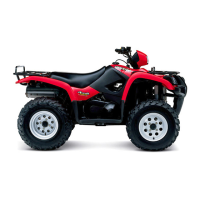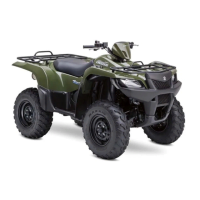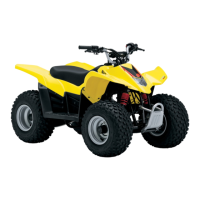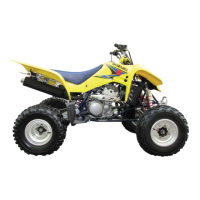4-8 FUEL AND LUBRICATION SYSTEM
• Clean all jets with a spray-type carburetor cleaner and dry them
using compressed air.
• Clean all circuits of the carburetor thoroughly - not just the per-
ceived problem area. Clean the circuits in the carburetor body
with a spray-type cleaner and allow each circuit to soak, if nec-
essary, to loosen dirt and varnish. Blow the body dry using com-
pressed air.
$
Do not use a wire to clean the jets or passageways. A
wire can damage the jets and passageways. If the com-
ponents cannot be cleaned with a spray cleaner it may
be necessary to use a dip-type cleaning solution and al-
low them to soak. Always follow the chemical
manufacturer’s instructions for proper use and cleaning
of the carburetor components.
• After cleaning, reassemble the carburetor with new seals and
gaskets.
INSPECTION AND ADJUSTMENT
Check the following items for any damage or clogging.
* Main jet * Throttle valve
* Pilot jet * Float
* Needle jet * Needle valve
* Gasket
NEEDLE VALVE INSPECTION
If foreign matter is caught between the valve seat and the needle
valve, the gasoline will continue flowing and overflow. If the needle
valve is worn beyond the permissible limit, similar trouble will oc-
cur. Conversely, if the needle valve sticks, the gasoline will not
flow into the float chamber. Clean the float chamber and float
parts with gasoline.
If the needle valve is worn, as shown in the illustration, replace
the needle valve assembly with a new one. Clean the fuel pas-
sage of the mixing chamber with compressed air.

